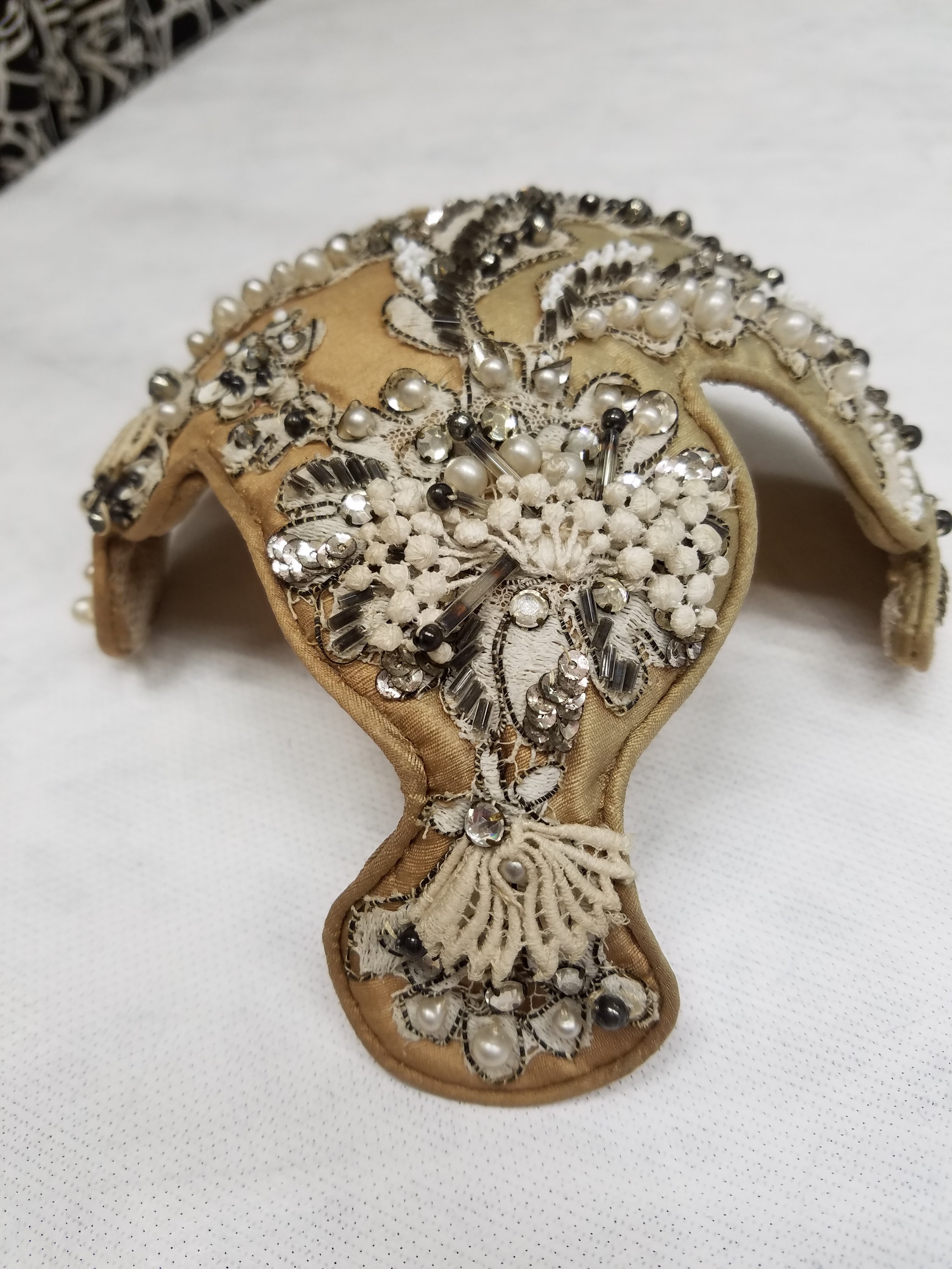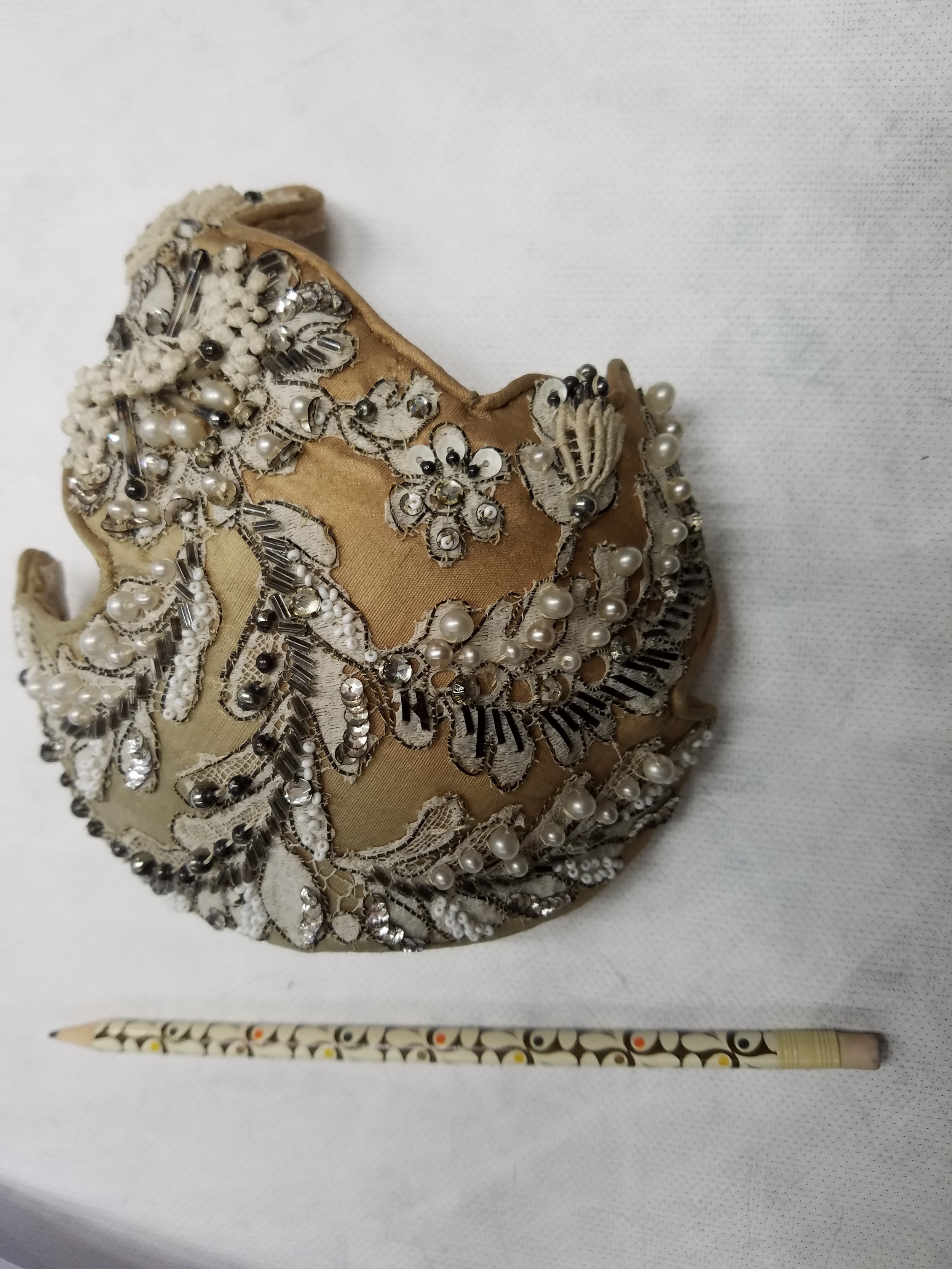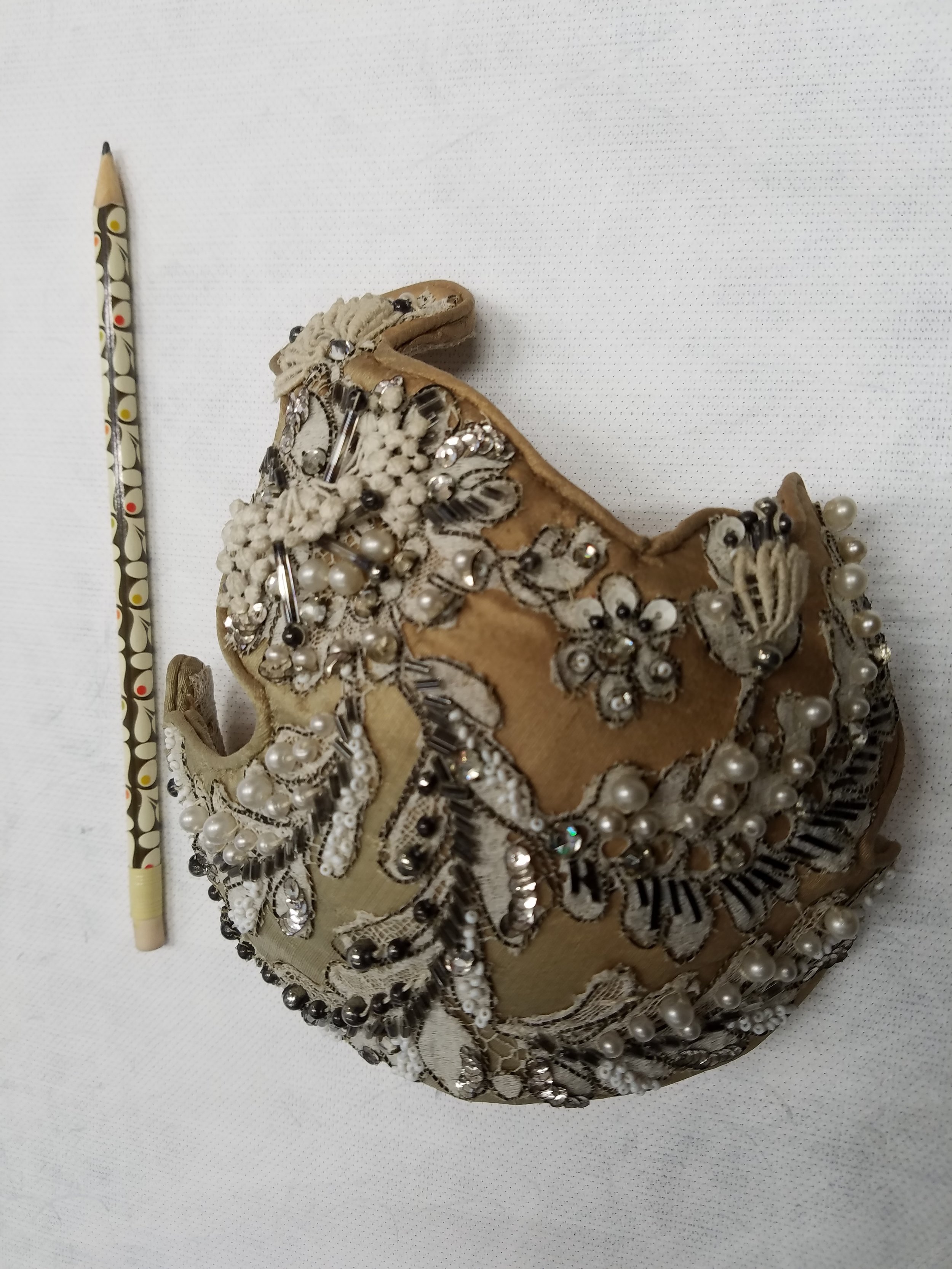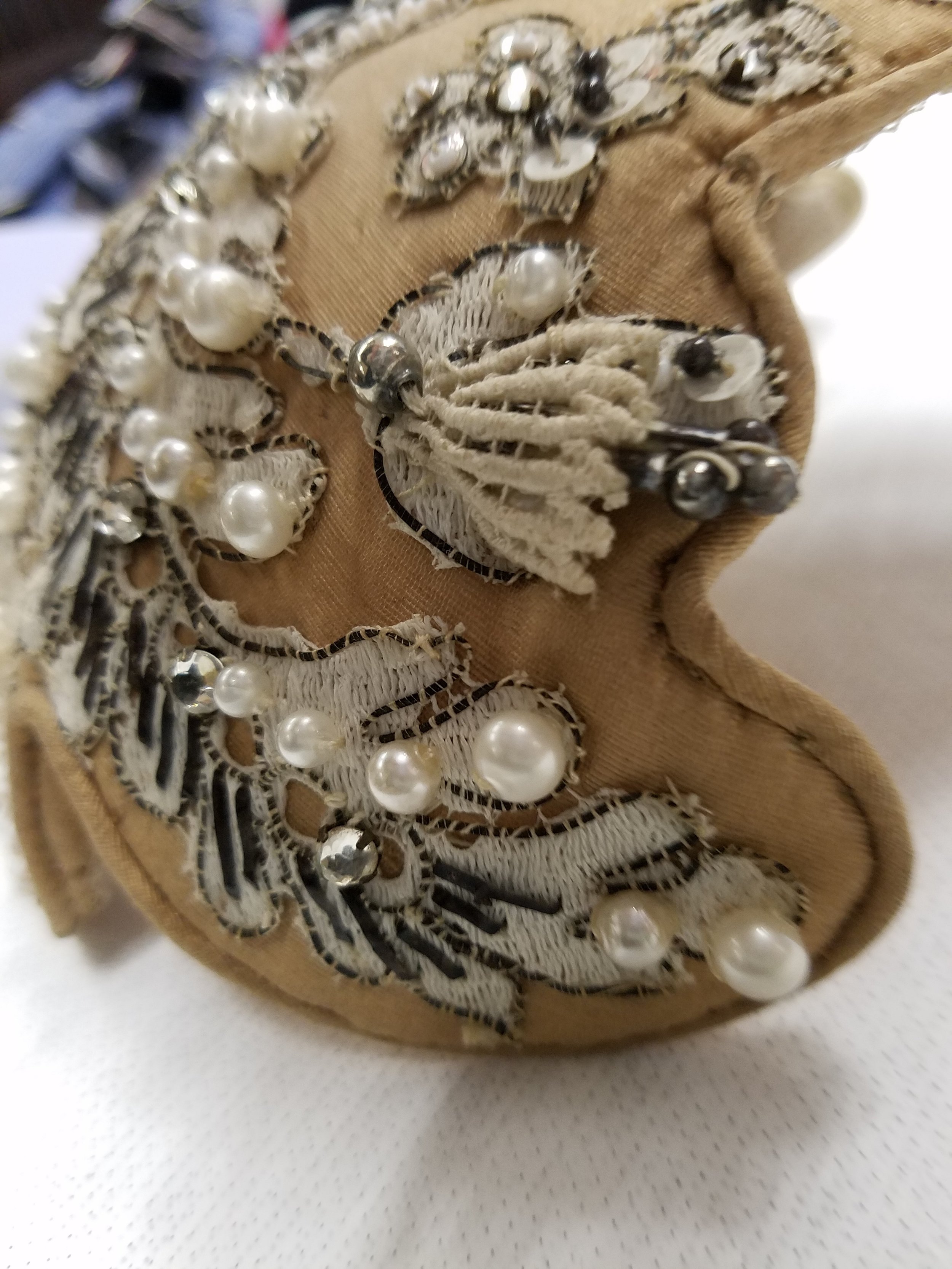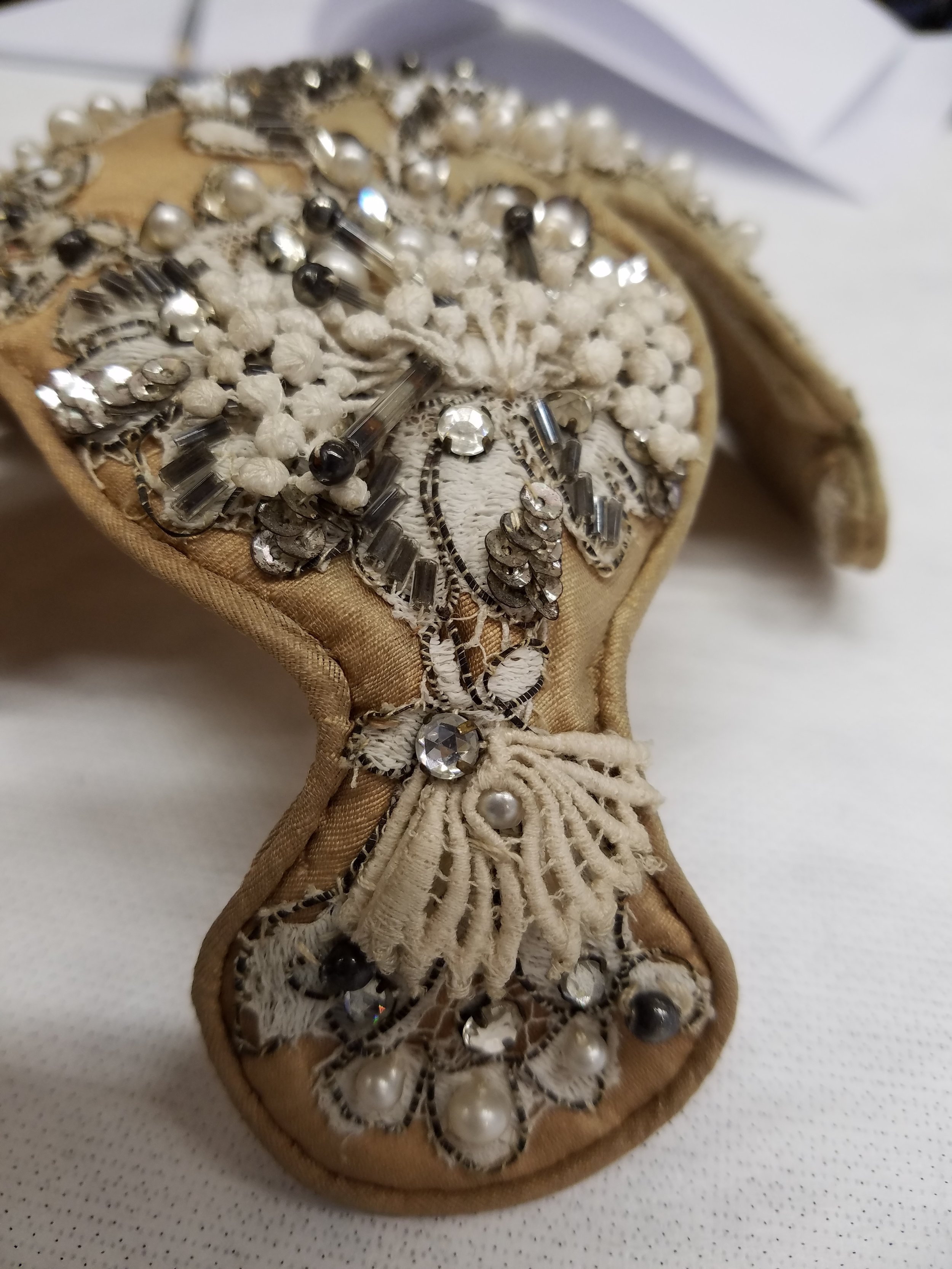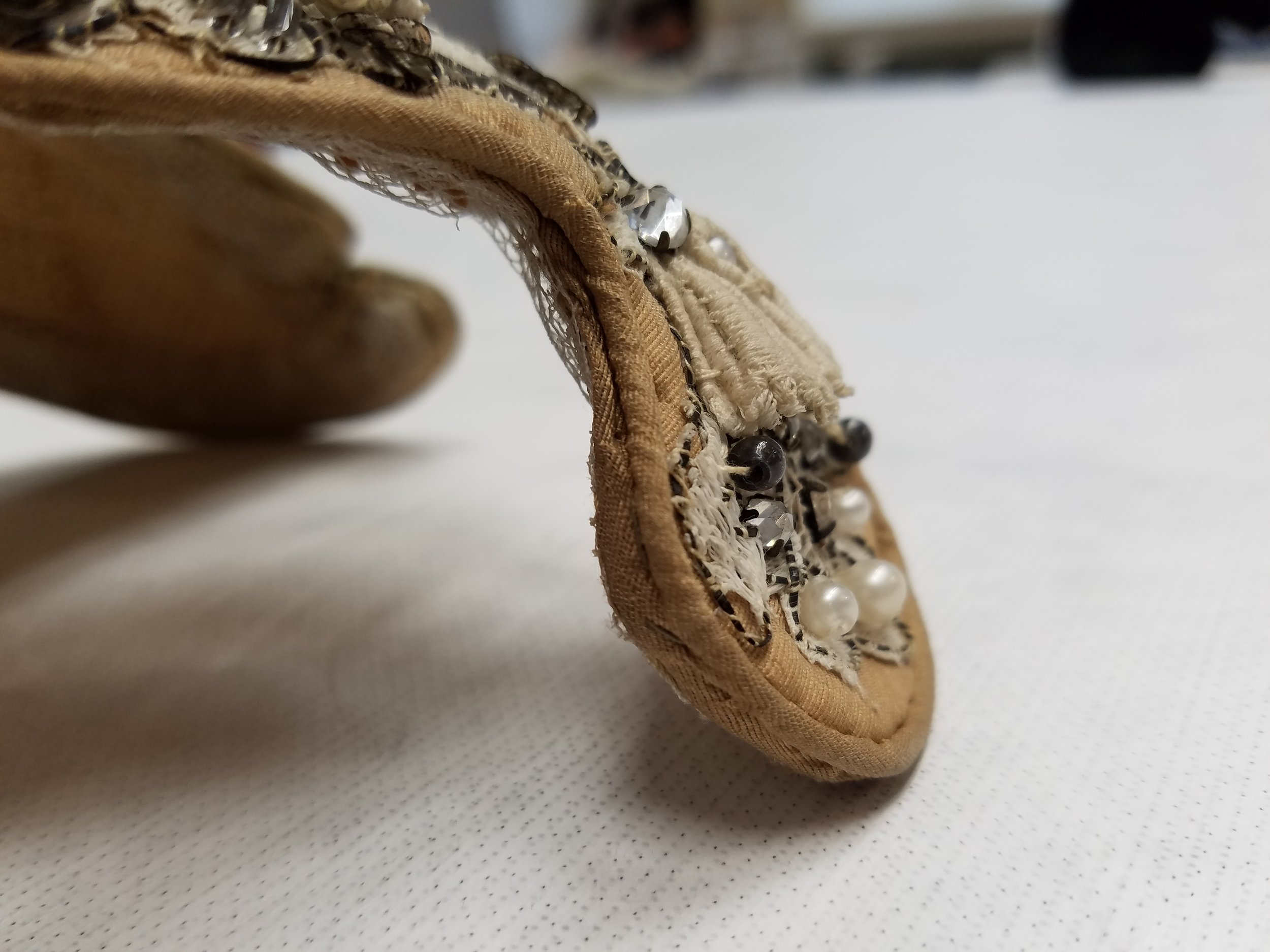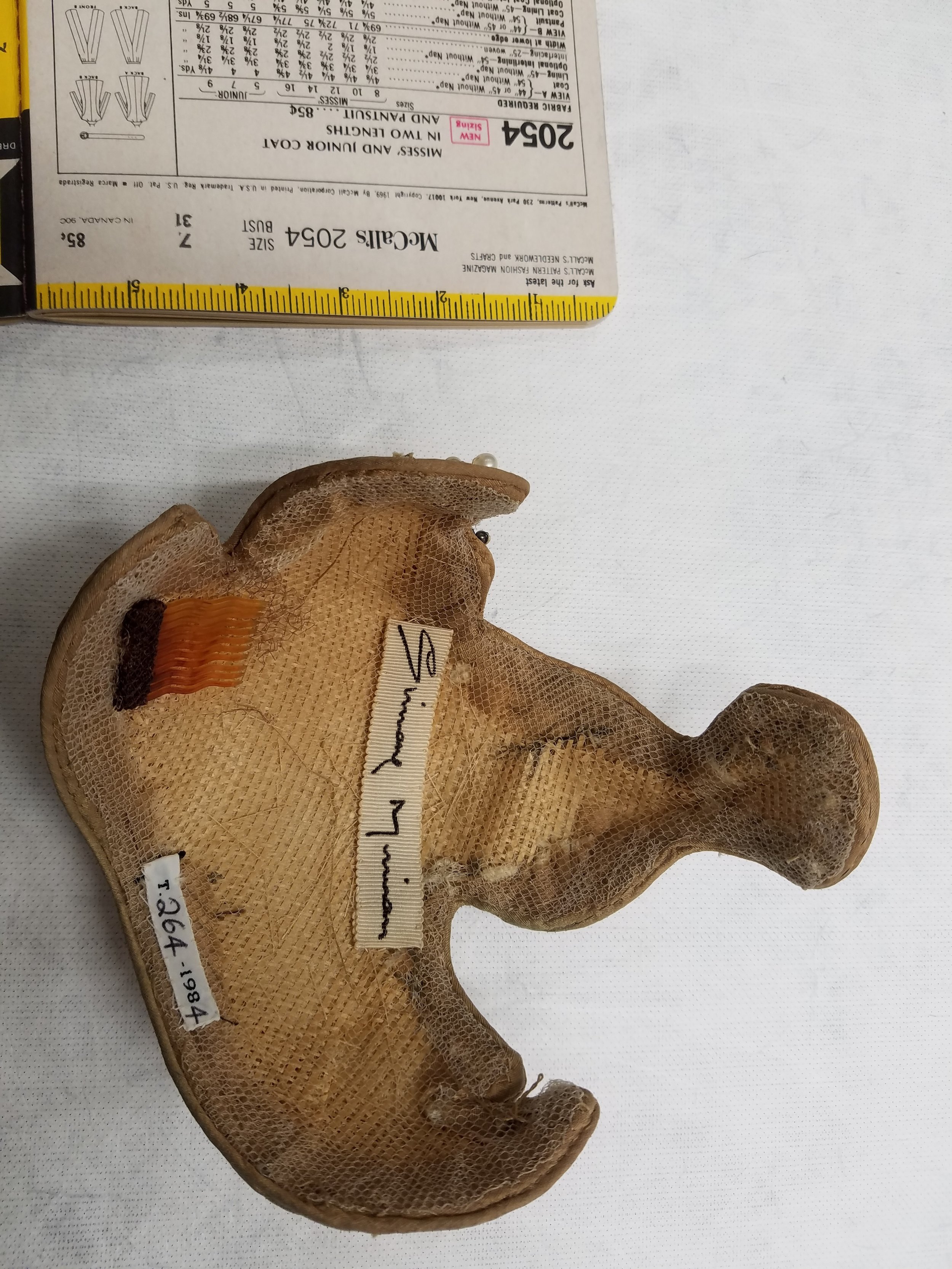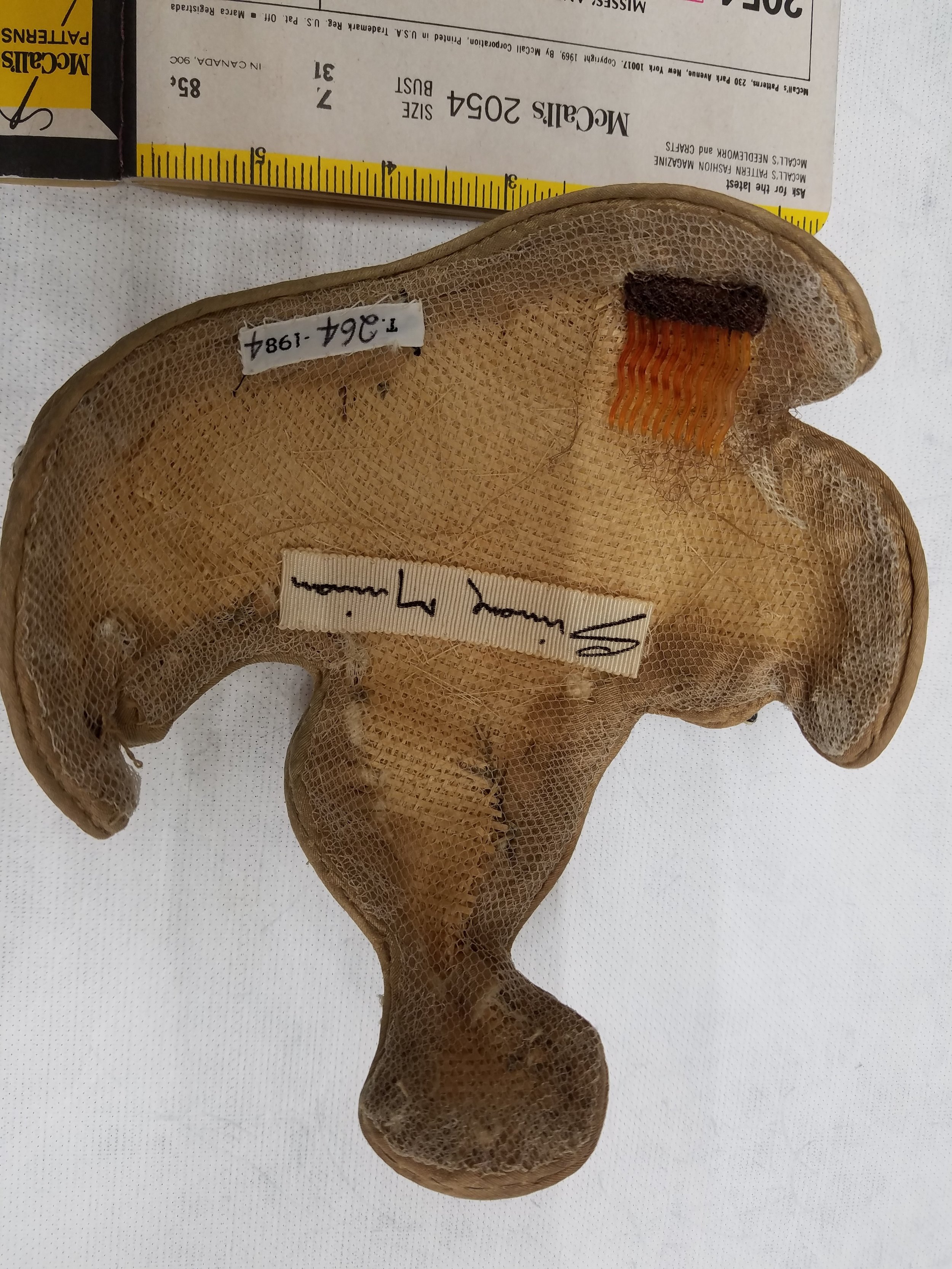Friday, October 12, 2018 - Met Tina to visit London’s Portabello Market, as Friday is the most successful day for the millinery supplies / trims and fabrics. The second booth we visited had a stack of embroidered and beaded decorations which had likely been cut from vintage clothing. I purchased two pieces, after the inspiration at Blythe house the previous day.
This piece was sewn to a square of paper, and when I cut it from the paper, I secured it gently to the fabric on the backside with fabric "Tacky Glue".
In the absence of willow foundation, I blocked a buckram skull-cap crown, and applied white cotton flannel batting to the crown. I gently steamed the flannel to secure it to the buckram on the block.
I used cotton covered millinery wire to manually create the meandering shape of the embroidered piece, and secured it in place by hand with 5/8" bias crinoline, then covered it with a bias strip of the dupioni silk to be used as the cover for the headpiece. Hand stitched the cover to the wired piece to form a double welt around the finished headpiece, then turned to the underside to secure all of the beaded artwork in place. Some of the beads had loosened; this step strengthened the design considerably.
I used the same dupioni silk from the upper side to line the underside, spraying lightly with fabric adhesive, then hand-sewing with invisible stitches, and gently pressing the edges without steam. Finally, I added a comb on the front center, and attached netting around the entire shape to allow for the use of hairpins without damaging the headpiece. The option of attaching an elastic is also still available.
I began this project at the end of October, 2018, and finished on August 22, 2019. I took the time to consider every step in traditional millinery practice, and I did not keep track of the time spent. Every stitch is hand-sewn. I was able to find wonderful beads to fill in where beads had fallen off, and was able to find a beautiful dupioni silk for the cover and lining. Thanks go to Tina Giuntini for the opportunity to be her “intern” for a day, and to Izzie Lewis and Wayne Wichern for prompting along the way.
This headpiece can be seen at our Ballard Millinery Studio this season, upon request.














